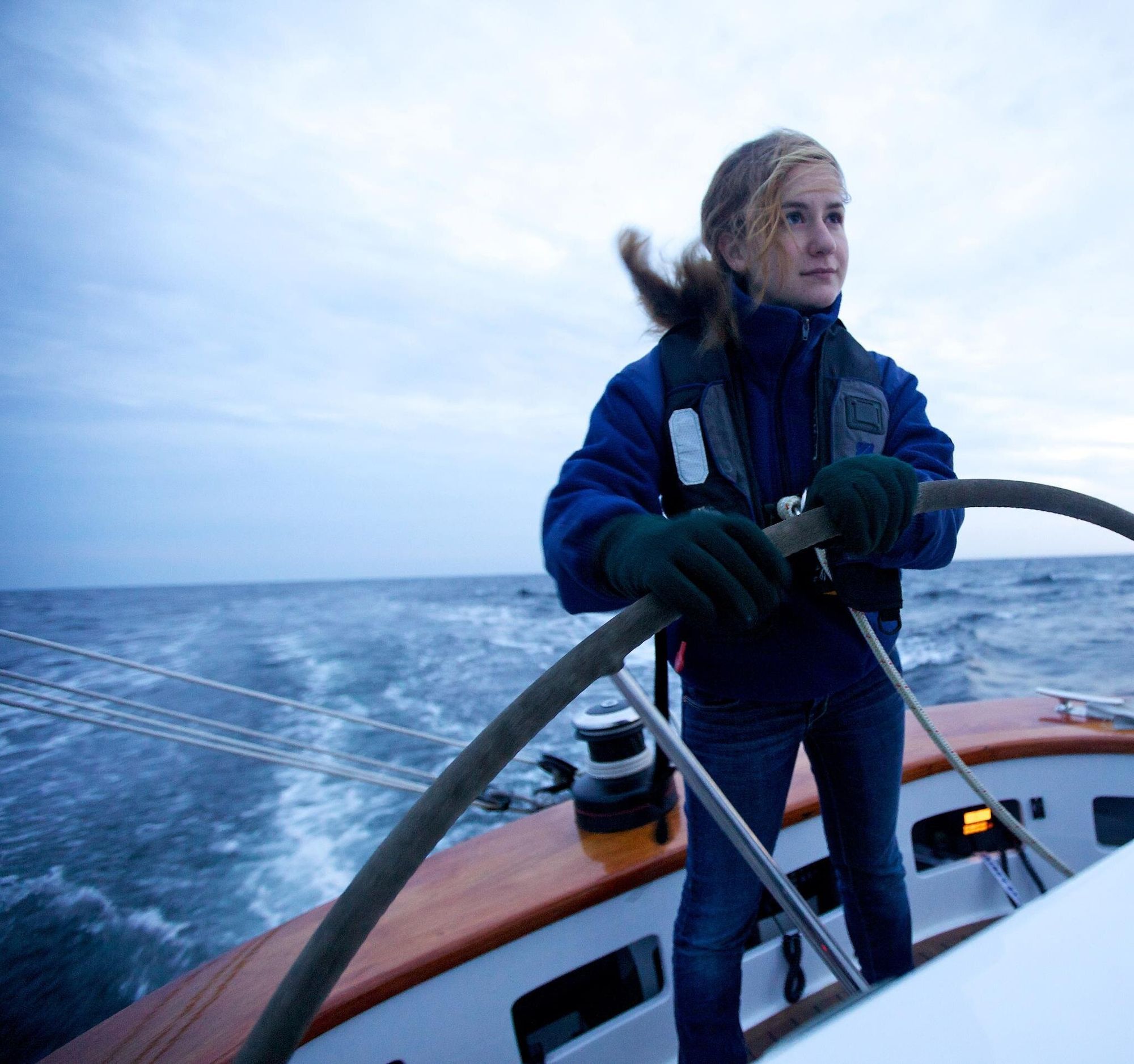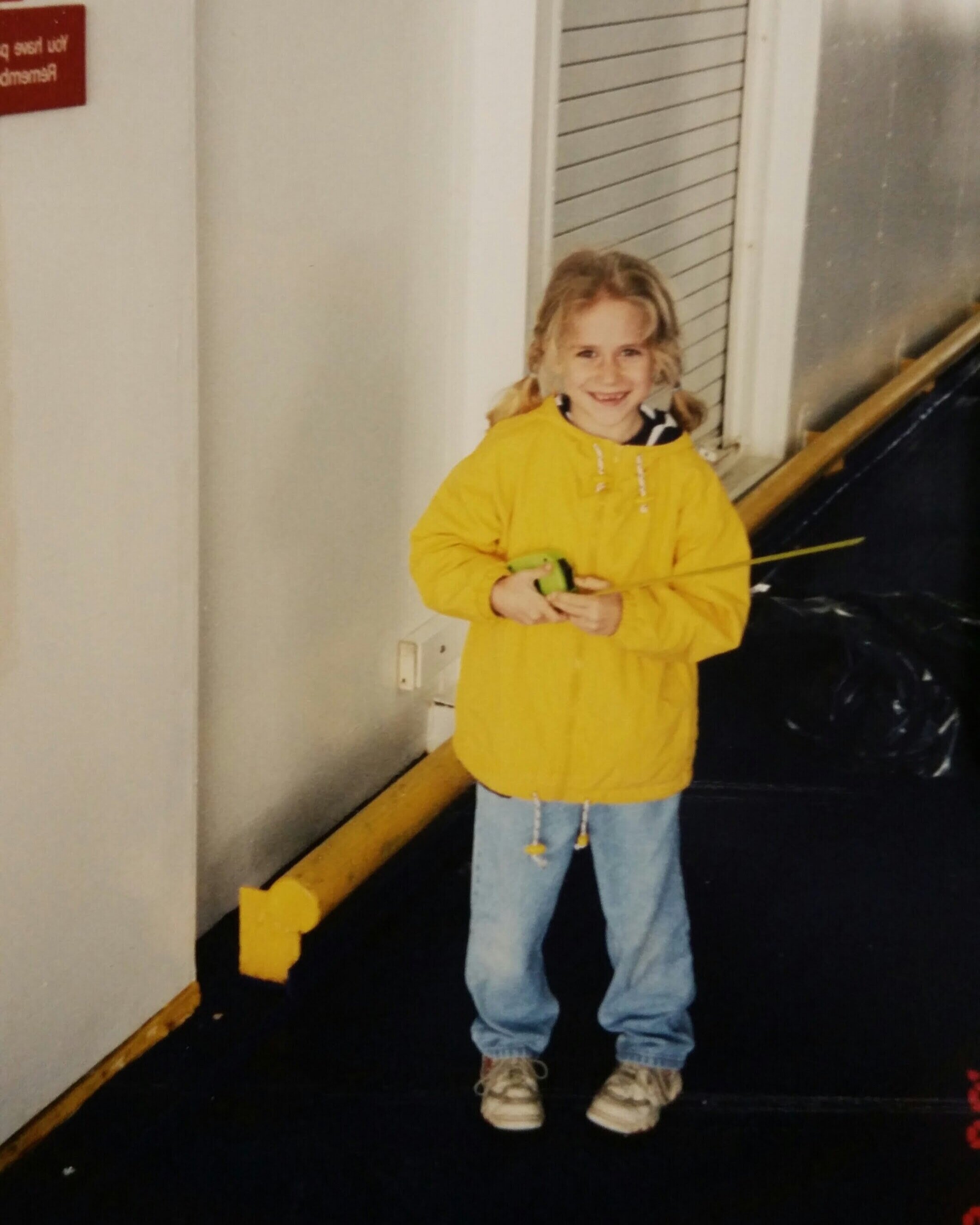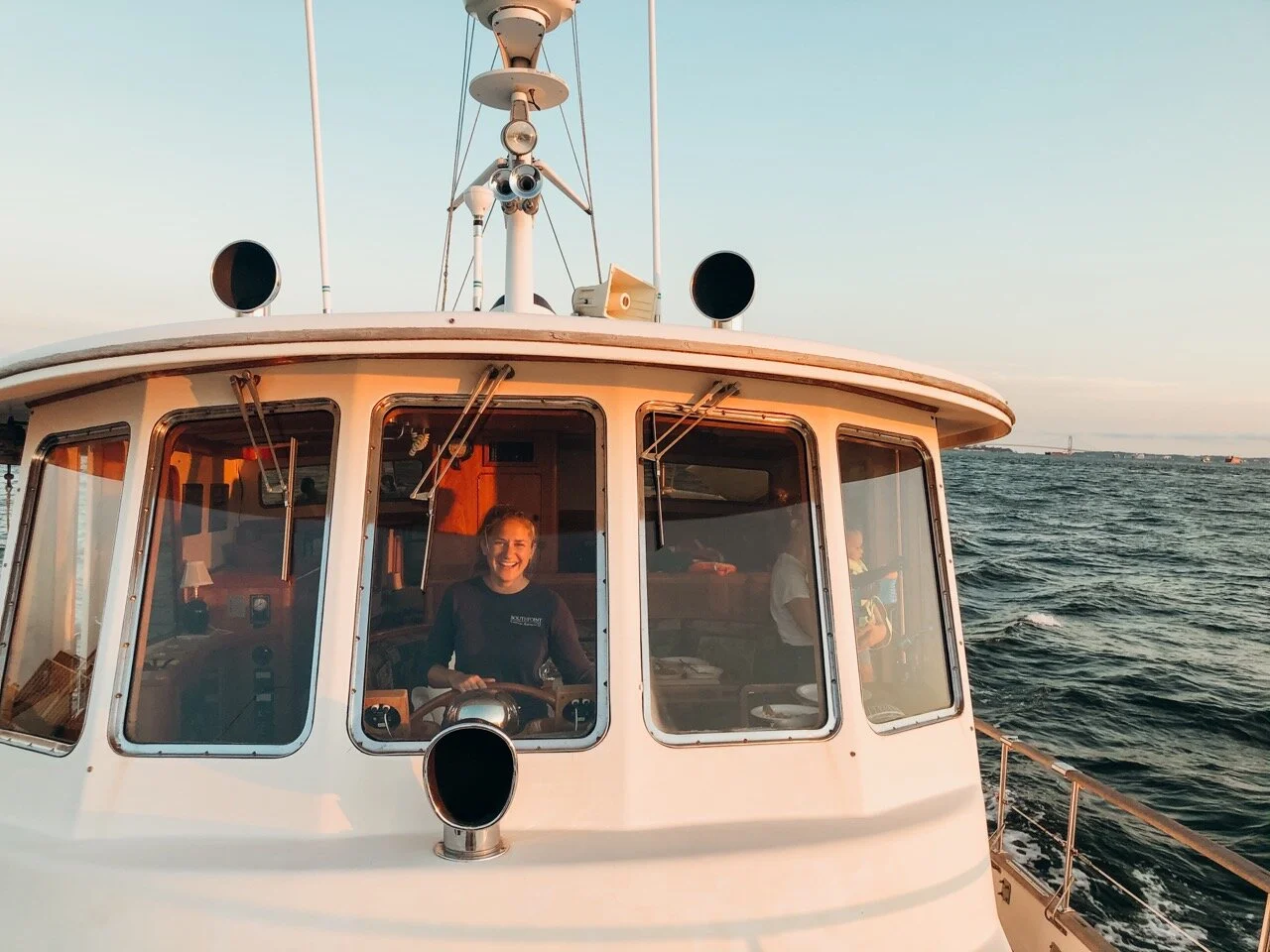Last-Minute NYC Holiday Gift Guide 🎁
We’ve created a holiday gift guide with presents for the intrepid New Yorker that should arrive just in time—


#TodayinInfrastructure: The next interview for our partnership with Madame Architect, to bring you a series of interviews with the people behind and critical to innovations in infrastructure these days…and that also happen to be women.
Hannah van Hemmen works in Port Newark, where she manages the environmental programs and coordinates maintenance dredging for the Port Authority’s New Jersey marine terminals in Newark, Elizabeth, Jersey City, and Bayonne. Before joining the PA, Hannah worked as a maritime scientist and engineer specializing in forensics, shipboard environmental equipment, and commercial ship valuations. She has also worked for the United Kingdom Parliament on EU fisheries policy, Tri-Lakes Marine on wooden boat restoration and engine repair, NYC Parks & Recreation on tree species identification and water quality monitoring, and started a small business in local seafood supply.

She holds a Master’s degree from Columbia University in Systems Engineering and a Bachelor’s degree from Dalhousie University in Environmental Science and Economics. She has authored academic papers on shipboard Oil Water Separators, maritime game theory, and international solar panel adoption trends. Hannah grew up sailing on the Navesink River, canoeing in the Adirondacks, and now lives on her boat in Jersey City, which she loves to take for weekend trips up the Hudson River and down to Sandy Hook. In her interview with Gail Kutac, Hannah talks about environmental components of port operations, environmental compliance, and continuous improvements, advising those just starting their careers to take risks.
HvH: I come from a family of maritime engineers — my dad, my grandfather, my great grandfather. My brother started out as an engineer but went back to school for law, so he abandoned the family trade [laughs]. My sister is a marine biologist, aunts and uncles are in the industry too.
I was always into math and science, but I resisted the idea of engineering at first because I saw all these very developed engineers around me, and it was intimidating. It’s one thing to be just good at math and science academically and then to see these developed engineers using those skills practically is another thing.
In the beginning, I found it overwhelming but my dad was super supportive of it and eventually convinced me [laughs]. I’m glad it worked out that way because I love problem-solving and I think studying engineering equips you well to be able to solve problems.
The main thing I learned about myself from studying engineering was to not be overwhelmed by the fear of not understanding something. If you’ve got a super complicated problem, all you need to do is break it down into its parts, and study each of those parts, and then the solution tends to reveal itself. It took me struggling through a lot of those complicated problems before I realized that it’s not so scary after all.

I’d say both. I think it came mostly while I was studying and working at the same time. I was going for my Master’s degree, and I was working for an engineering firm at the same time. It was overwhelming. I was taking difficult math courses while I was working on these complicated engineering problems, and just being thrust into all of that was when I sorted out my approach.
My dad works in forensic maritime engineering, which I did for a bit as well. That type of engineering is needed when ships collide or have groundings or engine failures. Primarily we worked with commercial vessels. You go out, find out what went wrong, who’s responsible, who’s going to pay for it, what repairs are needed. If it was a job on the weekend or at night, he’d just bring his kids along. So we were roaming around commercial ships since we were little kids. He would bring us to oil spill response training seminars [laughs].
So I had a lot of exposure growing up, but I also lucked into a couple of great internships when I was in college. I worked for New York City Parks and Recreation doing tree species identification and sub-habitat delineation with GIS and aquatic monitoring, which involved bug identification. You can look at the types of bug species that are in the water and that will give you a good indication of the quality because different bugs can only survive in certain types of water quality. That was fun, and it gave me awesome role models and solidified my love for the environment.
My first job out of undergrad was in environmental policy for the UK Parliament. It was an entry-level job, and I researched European Union fisheries management. It was a very hot topic because there are so many countries that fish out of the same bodies of water, so to set catch limits is really complicated.
Yes, because otherwise you’re going to overfish, and there are a lot of countries that push the envelope on their catch quotas. There are ways you can build the legislation to make it more effective.
I was also involved in the Rio+20 Sustainable Development UN Conference. We prepared legislators for Rio+20 because at the same time that all the heads of state meet for the UN conferences, there is a legislator meeting as well. It’s useful because then they can share environmental legislation that worked in their own countries. That experience gave me a better understanding of how complicated environmental problems are, which drew me more into the field. That was my beginning.
Later on, I applied to the Port Authority’s Leadership Fellows program and got accepted. It’s a two-year program where you have six-month rotations in different departments of the Port Authority. I specifically applied to the Port Department because I knew was more interested in the ships than the trains, or tunnels, or bridges. I rotated within the port department in the leasing division and the operations division at Port Newark, and in the director’s office, and then I applied for the position I’m in now, which is running the environmental programs for the New Jersey ports which are in Newark, Elizabeth, Bayonne, and Jersey City.
A lot of what I do is different every day, depending on what’s happening. I advise on the environmental aspects of our port operations, which covers anything from chemical storage or invasive species management to identification of greenhouse gas reductions opportunities.
I also manage the maintenance dredging program, the coordination of it. The Port Authority maintains the depth at all of our berths and the sediment naturally is not deep enough for the vessels that call now. We have a channel that the US Army Corps of Engineers dredges that leads under the Verrazzano, goes to our terminals in Brooklyn, to our terminals in Jersey City and Bayonne, and goes through the Kill van Kull — the water that separates Staten Island from Bayonne — you have to go through that narrow strip to get to Port Newark and Elizabeth. So they dredge there to 50 feet and then up to where our terminals are. It’s a lot of sediment that they’re taking, and the ships need to make sure that they stay in the channel to avoid groundings.
The Port Authority maintains the depth at the “parking spots” next to the wharf structure. We do soundings of all the berths to see what the depth currently is, and I match those to the depths of the vessels that are calling at the different berths because some berths are for containers, and some are for road salt, and some are for orange juice — the vessels have different depths that they require.
There are a lot of environmental considerations, for example, right now [March] we’re not doing any dredging because we’re sitting inside the “fish window” which is when the fish breed and lay their eggs in the sediment. We’re not going to take all of that up right now.

If I’ve done my job correctly, no! I anticipate this fish window, which opens in February, so I need to make sure that all of my dredgings, to maintain the depth at the berths, is completed before that window opens up, and to make sure we’re not going to have any issues for the next four months.
We have a lot of ongoing remediation because the port is built on historic fill. Back in the 1940s and ’50s, people weren’t paying as much attention to environmental aspects, so there’s cleanup needed from spills and old underground storage tanks. We’re always working towards cleaning that stuff up and coordinating it so that it minimizes the operational disruptions of the port.
I also manage the waste programs, which include everything from making sure we’re recycling paper in the office to making sure that we’re recycling asphalt from construction projects and managing, minimizing and disposing of hazardous waste.
In the past, job hunts — they can be so demoralizing, especially when you’re young in your career. It can hurt your self-confidence when you’re putting yourself out there and nothing is working out. Now I know that it’s about finding the right match. I talked about this some, but getting my master’s degree while working was just exhausting, but rewarding.
One last challenge — COVID-19. I’m considered essential, so most days I work at the port. I have a fieldwork component to my job and obviously, the port needs to continue to operate, I need to be there. For people who have been working fully remotely, they may not realize that even for those going into their offices, it is a much lonelier place!
I loved working for Martin & Ottaway — it was technical and interesting work. It was also challenging at times because I was the only woman in that field. The firm was founded in 1875, and they had never had a female engineer until me. When I would go out in the field for these forensics cases, there weren’t other women doing field maritime engineering. I’m getting to the highlight part of it [laughs]. The guys at the firm encouraged me to join this organization called WISTA, Women’s International Shipping and Trading Association, a professional organization for women who work in maritime. Joining was eye-opening for me as a young woman in the industry, and it was inspiring to see all of these confident, know-their-stuff women operating in the maritime universe. Getting involved in that association while working for Martin & Ottaway, and doing that really interesting work, was great and set the stage for a lot of the stuff that came downstream for me.
Another highlight was the Port Authority’s Operations Fellows program. It was just fun and I got to learn so much about different parts of the agency in such a short time, and you get to work on fun projects too because you’re only in each rotation for six months. The Port Authority is responsible for so many interesting, large- and small-scale projects that increase people’s quality of life across the region, and it’s just really energizing to be a part of that. For example, during one of my rotations, I worked on a project where we used the “Lean Methodology” to identify opportunities to improve the customer experience for truck drivers in terms of maintaining their credentials. Using this methodology, it’s really cool to be asking questions like, “Okay, the objective is to make this process more painless for people — what is the data telling us? What are the end-users telling us? What can we do better, and how can we make sure it happens?” The fellowship program was a great way to introduce myself across the agency and get exposure to a lot of those types of projects.
I don’t think so! My aunt — my dad’s brother’s wife — is a maritime lawyer and she is a member of WISTA. There were other women in my life who were involved in marine life — I had another aunt who worked for marine NGOs, but in terms of female maritime engineers, I don’t think I had met one until WISTA.

It’s a subset, of a subset, of a subset — because it’s engineering, and then the maritime field is dominated by men as well, and then since I was doing fieldwork, that was another layer. I’ve encountered a couple of female naval architects, but they’re usually office-based or they’ll work in a shipyard. In my early twenties, being the only woman occupied a decent chunk of my brain space, to figure out how to operate in those environments. Now I never think about it when I’m out in the field. Maybe that’s because I’m so used to it at this point. I think I found my own style and strategy because you can’t operate in the same sort of way that the guys do. You have to develop your own strategy for how you engage with people.
With the Port Authority, I have interacted with far more women than I have in any of my other work, which is a testament to their diversity and inclusion policies because they work hard at hiring women, minorities, and veterans. It’s been really cool. I’ve had two women bosses since I started at the Port Authority, which is fun!
My family — my parents, sister, brother, and sister-in-law. My mom has had health issues over the past couple of years and both she and my dad have adjusted to it so gracefully. It’s such a beautiful testament to their love that they’re handling this together. My sister has taken on a lot of the caretaking responsibilities for my mom who is now wheelchair-bound, so my sister took on this really hard thing during COVID and she is emerging out of it as such a strong person.
My brother and sister-in-law had a baby this year and they have incredibly demanding careers and they’re making having a baby with their careers look easy — which I know it’s not! I’ve been admiring them as well, especially in the midst of Covid. This year has been a lot of me looking at my family and thinking they’re incredible.
I want to improve people’s quality of life, and part of that is the environment. I think people want to take care of the planet, but it’s not always clear how to do that. What I want to do is take stuff that looks like it’s really complicated and make it simple and easy to do. If the maintenance crews do a construction job and they generate a lot of asphalt millings, if they don’t know that can be recycled easily, then it’s going to become a problem, and they think, “How do I get rid of this and just sweep it under the rug?” But if they know that it’s easy to recycle asphalt millings and they know there’s a recycler close by that can come and fetch those millings, it can become something that they take pride in. I think this applies to many different problems — taking complicated things and simplifying them gives people the opportunity to do the right thing.
Take risks, and even if something doesn’t pan out, you’re going to be stronger for it and more capable, and that will advance your career if you harness it. My advice isn’t different for women but just amplified because there are a lot of invisible forces that tell women to take the safer option and to not take risks. I think it’s important for women to keep that at the front of their minds, to take risks, and to go for it because of the subconscious and societal forces encouraging the safer option. It’s important to remind yourself out loud to take those risks.
Read our previous interviews in Today in Infrastructure, our partnership with Madame Architect. Next, check out the Top 10 Secrets of the Port Newark-Elizabeth Marine Terminal!
Subscribe to our newsletter